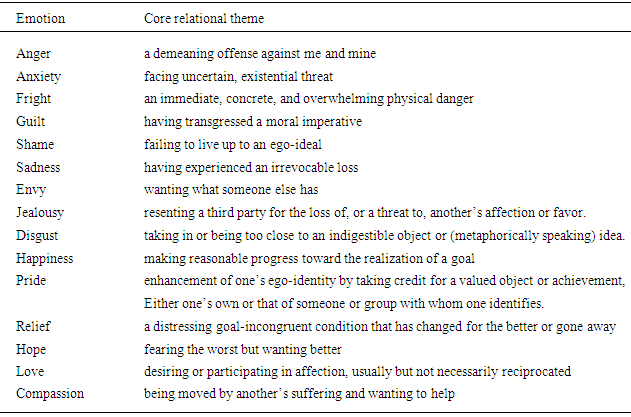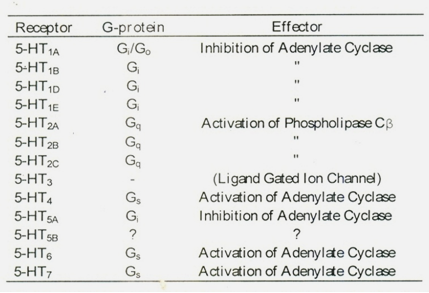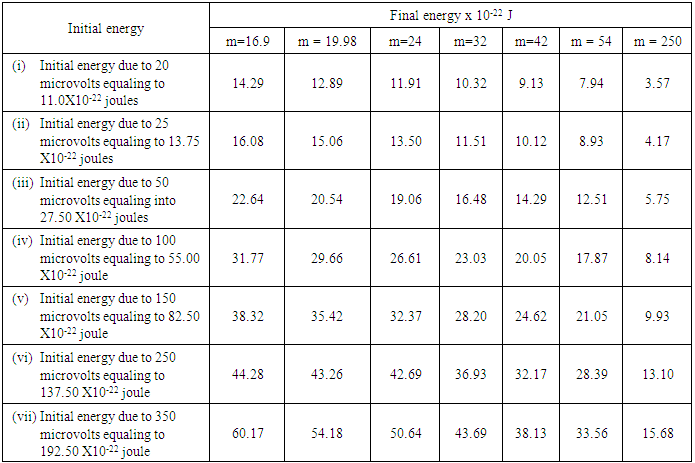-
Paper Information
- Paper Submission
-
Journal Information
- About This Journal
- Editorial Board
- Current Issue
- Archive
- Author Guidelines
- Contact Us
International Journal of Biophysics
p-ISSN: 2168-4979 e-ISSN: 2168-4987
2015; 5(1): 1-11
doi:10.5923/j.biophysics.20150501.01
Role of Protein Vibration in Emotion, Attention, Learning and Memory
Brajagopal Majumder
SRC-Tripura, Melarmath, Agartala, Tripura
Correspondence to: Brajagopal Majumder, SRC-Tripura, Melarmath, Agartala, Tripura.
| Email: |  |
Copyright © 2015 Scientific & Academic Publishing. All Rights Reserved.
A brief account of behavioral traits of an individual particularly with respect to emotion, attention and learning has been discussed. It has been shown that emotion; attention and learning are closely related to each other. Earlier these were used to be discussed from the view point of macro behavioral attitudes like physical changes viz. body language etc. of the individual. With the advancement in molecular biology these are discussed and experimented in the context of micro molecules. The role of protein with its vibration in explaining emotion, attention and learning is explained here briefly. Attempt has been taken to identify different proteins responsible for different characteristics of the behavioral traits of the individual. The results pertaining to learning and retention of the learned events evaluated on the basis of “protein vibration” from the view point of one dimensional Schrodinger Equation are found compatible with those observed by the scholars on undertaking experiment on mice in 1963 and also in subsequent years.
Keywords: Emotion, Attention, Learning, Mental disorders, Bipolar, Depression, Molecular Biology, Protein Vibration
Cite this paper: Brajagopal Majumder, Role of Protein Vibration in Emotion, Attention, Learning and Memory, International Journal of Biophysics , Vol. 5 No. 1, 2015, pp. 1-11. doi: 10.5923/j.biophysics.20150501.01.
Article Outline
1. Introduction
- It has been established since decades together that the standing hypothesis of learning are propounded in the form of S-R (stimulus response) connection. S-R hypothesis in turn is concerned with specific regions of the brain which is activated periodically with the sensation created by nerve impulses. And distortion in learning event becomes inevitable if there be any disturbance in the periodic activities of the brain.It was suggested by Babsky et al. [1] that external stimulations like electric impulses constitute as one of the principal means of central Nervous System (CNS). In response to different impulses induced by external stimulation, it is possible to investigate accurately the transmission pathways of information to various brain structures and localization of sensory system perceiving these stimulations. This constitutes broadly the role of the electrical phenomenon in cerebral cortex of the individual. Since thirties, this has constituted the background of individual behavioral traits particularly with respect to emotion, attention and learning capability of the individual. However, this has now been changed with the advancement in molecular biology and the whole scenario is now looked on the role of micro molecule like protein, lipid etc. It has been established by Kovalyova [2] that when an electric signal gets to a neuron, the structure of the membrane lipid is changed and they pass into a new state with intensifying RNA activity and its constituent protein synthesis. If the cell does not undergo any change, nothing will be recorded. It means it has just reacted to an external irritant. But if the cell passes into a state with some new property, it means that an imprint of the received information is left and a trace of memory has emerged. At this stage, the lipid structure becomes restructured, the nature of the synthesis of constituent protein becomes different and the entire synthesis process of the cell passes into a new state. The re-oriented proteins enter the lipids and stabilize their new structure.Now the question is – what role is being played by protein in generating emotion and attention in an individual?Recent investigations on hippocampus, amygdale, thalamus and on frontal cortex with the application of modern technique like PET (Proton Emission Tomography), MRI (Magnetic Resonance Imaging) reveal us the fact that specific regions of the brain are associated with specific activities of the individual. Amygdale is responsible for emotion and craving for learning when the emotion is positive. This in the long run reveals as short memory. On the other hand, thalamus is found to be responsible for sensitivity of pain etc. But the recent achievement in molecular biology paves the way of considering this entire phenomenon in the context of the role of proteins. A brief account on the role of protein in emotion, attention & learning has been discussed in the present paper under the title “Role of micro molecules- Protein”. For example, while serotonin receptor, Dopamine transporter etc. are held responsible for generating emotion- positive or negative whatever it may be, BCMP-1 and other membrane bound proteins etc. are found responsible for learning’s and their retentivity.
2. Back Ground
- Emotion in broad sense is the mental condition of an individual. It is practically the behavioral outbreak of a person. It depends on both the mental (psychological) and physical status of the individual. There may be mainly a number of causes for generation of emotion in an individual. Usually, mental causes result as physical changes in an individual. These outbreaks may be happened in two categories- positive & negative. This means emotions may be categorized as of positive and negative characteristics.R.S. Lazarus [3] suggested for 15 different emotions. Among these 15 emotions, there are roughly 9 negative emotions namely anger, fright, anxiety, guilt, shame, sadness, envy, jealousy and disgust. According to Lazarus [3] each is “a product of a different set of troubled condition of living and each involving different harms or Threats”. On the other hand, Lazarus [3] also categorized 7 positive emotions like happiness, pride, relief, love, hope, compassion, and gratitude. He also held that each type of emotion arises from different causes which bond a relationship between a person and the environment in which he lives. As for example- “feeling angry has its own special characteristic and so does for feeling anxious, guilty, ashamed, sad, happy and proud and so on. Though this way of thinking may be complex, yet this enriches the job of understanding and predicting the situation.”The experiments so far conducted on the effect of emotion are concerned mainly with psychological and physiological aspects of the individuals. From all established experiments it reveals that the individual can recall the experiences generated due to both positive and negative emotions.Emotion- positive or negative whatever may be, are closely associated with core relational themes. Following Lazarus [3], some of the core relational themes associated with emotions are tabled as,The relational meaning usually stands for a person’s sense of benefit and harm in a particular person-environment-relationship. To speak of harm and benefit, one has to consider cognitive, motivational and relational aspects of the person-environment situation. Thus, it can be held that emotion is aroused not just by an environmental demand rather with person’s motives and benefits. However, emotion is always accompanied by stress. There have been two varieties of stress – Eustress and distress. While Eustress is associated with positive emotions like positive feeling and healthy bodily states, distress is associated with negative emotions like negative feelings and disturbed body state. So, it is held that stress is merely a form of activation. Thus, feeling of emotion viz. physical change of an individual is directly proportional to magnitude of mental stress. This advocates for different appraisal of the personal involvement in an adaptation encounter. From this, one can focus on learning different adaptation ally relevant things as what is happening and what will be the characteristic of the person who is reacting to the happening?Basing on different experiences of emotions, the scholars are trying to correlate these with the process of learning. However, they are of the opinion that emotions also create attention is an individual which ultimately leads him in learning. Now let us examine the role of attention as preparedness of learning.
|
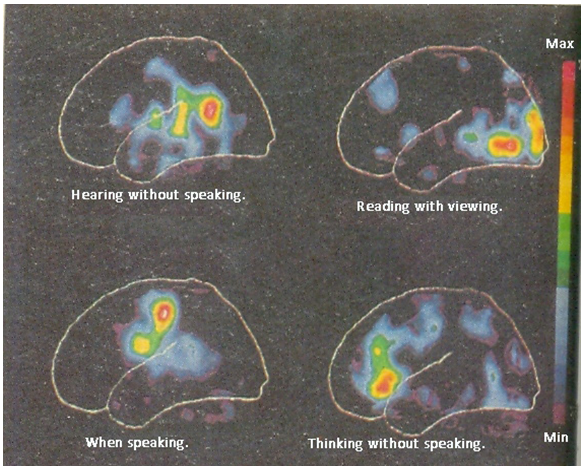 | Figure 1. Blood flew with glucose metabolism in different regions of the brain. (Courtesy: J.J. Ghose as depicted in Bengali periodical DESH, 1992,58) |
3. Role of Micro Molecules-Protein
- Emotion, Attention and Learning are very much related to each other. Till to date these are viewed by the physiologist, psychologists and educationists from macro behaviorism of the individuals. Different experiments are conducted basing on physical changes occurring in human behavior. Some scholars are also conducting experiments on physiological changes with the help of sophisticated instruments like MIR, PET etc Recently, EEG rhythms of different frequencies are applied to measure the level of learnt events. Moreover, it is possible today to identify correctly the causes of mental depression, borderline disorder, anxiety disorder, panic disorder (phobia), attention deficit disorder etc. with the help of PET, MRI, FDG etc. Recently, it has been observed through PET and FDG that unipolar depression and bipolar depression are different types of diseases. Differentiation in blood circulation and in glucose metabolic behavior is largely found in different regions of the brain in case of these two types of diseases. Degree of glucose metabolism in basal ganglia of middle lobe and certain regions of frontal lobe increase almost 1000 times in border line disorder persons with respect to normal individuals. On the other hand, it is observed that the metabolic behavior of glucose is found to decrease abnormally in certain regions of the brain of hyperactive children. Though hard, it has become possible to observe the physiological changes in an individual who intends to kill himself with the help of PET. It reveals from PET scanning on similar individual that the number of protein receptors namely serotonin neurotransmitter increases in the individual at the moment of his attempt to kill himself. From these studies scholars now can identify the specific regions of the brain responsible for attention. Thus, from the above studies, it can be held that the causes for emotional changes- positive or negative, attention, learning and subsequently memory traces are practically associated with change in vibration frequencies of certain proteins- most of which are still to explore. However serotonin receptor, Dopamine transporter, noradrenaline transporter, hormone etc. have so far been identified as responsive to certain of emotion- positive or negative. It has been experimentally proved that Dopamine transporter and noradrenaline transporter remain in the cell membrane of the synapses. When a brain stimulant medicine enters the brain, the medicine by organic reactions gets bounded with respective proteins. These in turn generates craving for stimulant medicine by the individual. Thus, it is now an established fact that differentiation in blood metabolism and participation of different proteins etc. are found to be responsible for creation of emotion in an individual.Recent physiological and biochemical investigation reveal that membrane bound protein play a vital role in storing and also in reproducing the learnt events [15]. So far the mechanism of memory is concerned most of the researcher emphasized on membrane bound proteins. Some of the membrane bound protein with their ID names is listed in.
|
 | Figure 2 |
4. Methodology
- The author in a recent paper [15] showed that the recalling of the learnt event depends on the number of frequencies of vibration in protein. The problem of protein vibration responsible for memory was considered [15] in the light of the solution of the standard form of Schrodinger Equation Inserting the potential energy function v = ½ kr2 in one dimensional Schrodinger Equation
 | (1) |
 | (2) |
 | (3) |
 | (4) |
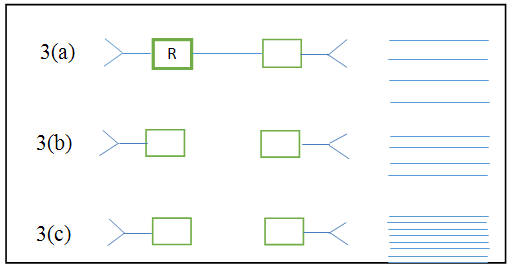 | Figure 3. Vibrations of Protein shown in figure 3. (a) represents protein of large molecular weight, 3. (b) represents protein of medium range molecular weight & 3. (c) represents transient protein |
5. Results & Discussion
- Basing on these approaches the author [15] calculated vibration frequencies of above mentioned proteins as
|
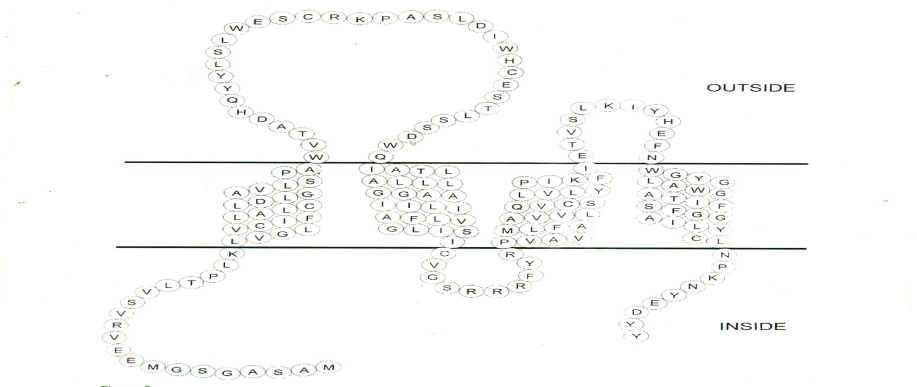 | Figure 4. As proposed by Christiane Christophe –Hobertus et al |
 | Figure 5. Graphical representation of Decay Energy with Respect to time for protein of mass =19.98kD |
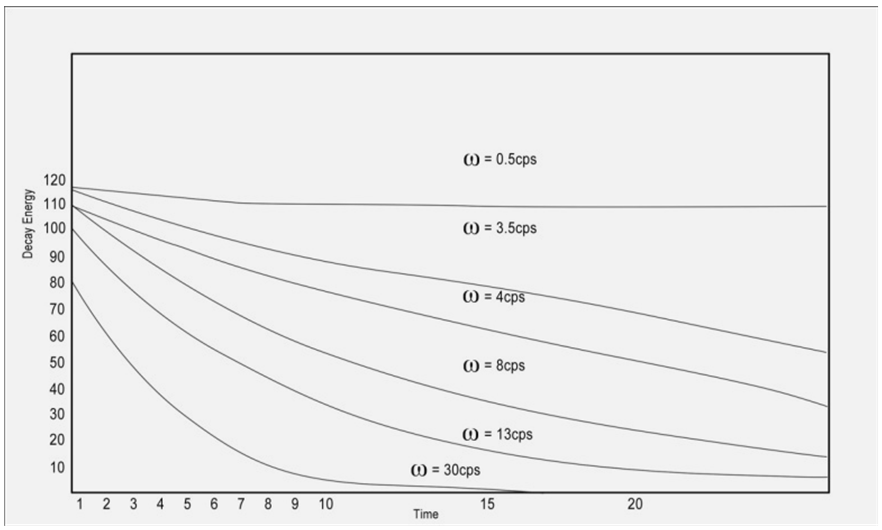 | Figure 6. Graphical representation of Decay Energy with respect to time for protein of mass = 54 kD |
 | Figure 7. Graphical representation of Decay Energy with respect to time for protein of mass = 250 kD |
|
|
6. Conclusions
- From the above discussion, it is found that emotion, attention, learning and memory traces are correlated not only from macroscopic point of view but also in the context of micro molecules viz. proteins. Different kinds of proteins are associated with the three basic regions of the brain like Amygdale, Hippocampus and Thalamus. They are interconnected with each other though they lie in three different regions of the brain. Interconnection is made through proteins, the mechanism of which lies in the fact that some protein molecules act as adhesive on cell membranes. The main objectives of these proteins are to maintain the communication from cell to cell. These proteins are briefly called CAM (Cell Adhesive Molecules). These are numerous in numbers. Usually, these proteins lie on the outside (membrane) of the cells. These proteins are responsible not only for network functioning between cell to cell but also for looking after the growth and movements of the cells. Thus, it can be concluded that emotional learning, normal learning etc. are closely associated with protein functioning lying particularly in amygdale, hippocampus, and other necessary parts of the brain and the measures of learning outcomes are associated with the level of vibration energies generated due to different external stimuli.
ACKNOWLEDGEMENTS
- The author is thankful to Dr. U.C.De, associate Prof. Deptt. Of Chemistry, Tripura University for his helpful discussion. He is also thankful to Mr. Bishnupada Dey, Asst Teacher, Mr Debojit Banik, Mr Rajib Malla and Mr Tanuj Sharma for their co-operation in computer work of the manuscript.
 Abstract
Abstract Reference
Reference Full-Text PDF
Full-Text PDF Full-text HTML
Full-text HTML